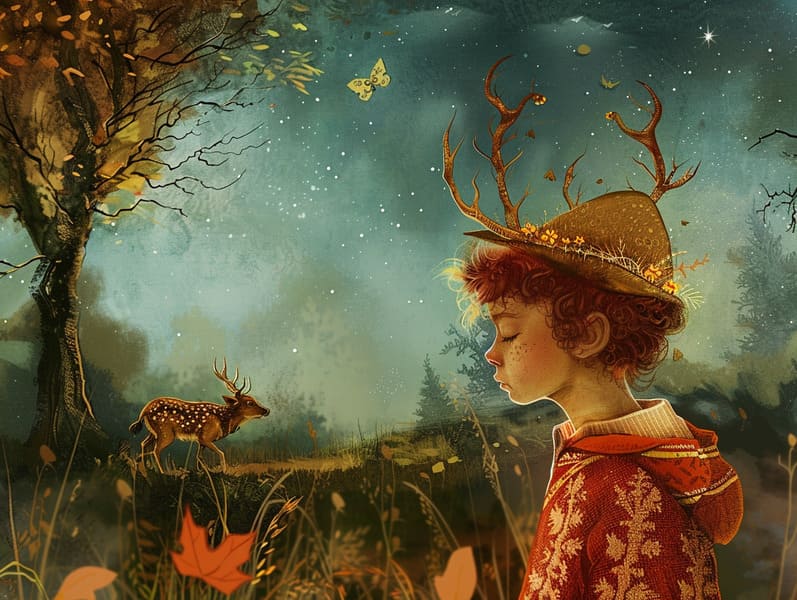The Journey of Best Fairy Tales and Their Continued Radiance.
The Journey of Best Fairy Tales and Their Continued Radiance.
Blog Article

Short fairy tales have old origins. These stories have been relayed from one generation to the next long before they were ever transcribed. They originated from a variety of traditions, including American traditions. They were initially transmitted among older generations, often carrying themes and messages reflective of the societal norms and beliefs of the time.
The Grimm brothers, Jacob and Wilhelm, were among the first to compile and publish many of these beloved fairy tales. Their compilation, "Grimm's Fairy Tales," included tales like "Ashenputtel," "Hansel and Gretel," and "Snow-White and Rose-Red," which have since become cornerstones in the world of children's fairy tales. Similarly, the Danish author's enchanting stories, such as "The Sea Maid," and "The Duckling that Could," have won hearts worldwide, cementing their place in the pantheon of treasured fairy tales.
Despite their historical roots, these tales remain as pertinent as ever, especially as nighttime stories for kids. These fantastical tales are now available in numerous formats, including richly illustrated books, captivating animations, and online fairy tales.
Their enduring popularity can be attributed to several whimsical characteristics:
Vital Lessons: Classic fairy tales often present important moral lessons. Stories like "The Wolf and the Liar" teach the importance of honesty, while "The Race of the Tortoise and the Hare" show the values of perseverance and meekness. These tales offer children clear distinctions between ethical and unethical, developing their moral compass in a subtle yet significant way.
Compassion and Insight: Traditional fairy tales frequently include beings facing struggles and tests, provoking audiences to empathize with their struggles and back their triumphs. For instance, "The Story of Beauty and the Beast" demonstrates the necessity of valuing inner qualities to acknowledge the real character of a individual, advancing awareness and awareness.
Cultural Understanding: Many old fairy tales are steeped in the cultural contexts from which they developed. Engaging with these stories can provide captivating looks into different societies, nurturing a sense of world understanding and awareness.
Creativity and Imagination: The fantastical elements in timeless fairy tales—enchanted forests—unleash children’s fantasies. These narratives carry readers to enchanted realms, fostering inventive ideas and a sense of excitement that persists a lifetime.
Ancient fairy tales are not only magical but also pedagogical. They provide charming tools in nurturing various mind and heart abilities in kids. When fairy tales are narrated, they enhance language proficiency by showing new lexicon and elaborate sentence structures. This practice also advances listening skills and mindfulness, as little ones pay close attention, eager to see what happens next.
Furthermore, examining the themes and characters of classic fairy tales can promote cognitive skills and cognitive skills. Children are led to discover patterns, guess what will happen, and make sense of cause and effect. These analyses also boost young ones communicate their thoughts and feelings, cultivating their emotional intelligence.
In today’s digital age, the proliferation of online storybooks has made these narratives more accessible than ever. Web-based platforms and mobile apps supply comprehensive collections of bedtime fairy tales that can be read or listened via anytime, anywhere. Fairy tales told out loud are particularly prevalent, extending an immersive method for children to experience these magical stories. Audiobooks and read-out-loud stories guide characters and settings to life, often enhanced by charming melodies and instrumentals that boost the tale-telling adventure.
The timeless charm of timeless fairy tales lies in their ability to alter to modern times while keeping their main lessons. Contemporary renditions of these stories often spotlight more inclusive characters and modern settings, here making them understandable to today’s audience. However, the underlying themes of fortitude, benevolence, and impartiality remain unchanged, continuing to touch young listeners of all ages.
Timeless fairy tales also offer a sense of protection and knowability. They extend a neat narrative with a unmistakable beginning, middle, and end, often coming to a close with the resolution of conflicts and the triumph of virtue over corruption. This certainty can be easing for young readers, furnishing a sense of stability in an constantly changing world.
Traditional fairy tales continue to spellbind and educate new generations, maintaining their elegance and significance in modern society. As nighttime stories for kids, they confer upon a perfect blend of delight and instruction, promoting moral values, empathy, and creativity. The prevalence of digital fairy tales and the widespread nature of fairy tales voiced warrant that these old tales remain obtainable to new generations.
By retaining and distributing these tales, we continue to commemorate the rich tapestry of lore and cultural heritage. Whether you are reading a vividly illustrated book, delving into a web collection, or listening via an audio story, the attraction of famous fairy tales is always within reach. These tales illustrate of the perpetual spell of tales and its ability to connect us across eras and regions.
Regardless if you are discovering a vividly illustrated book, enjoying a virtual library, or hearing an spoken story, the magic of traditional fairy tales is always within reach.
These stories remind us of the unfading spell of tales and its ability to unify us across centuries and lands, forging a link that captivates and teaches alike.